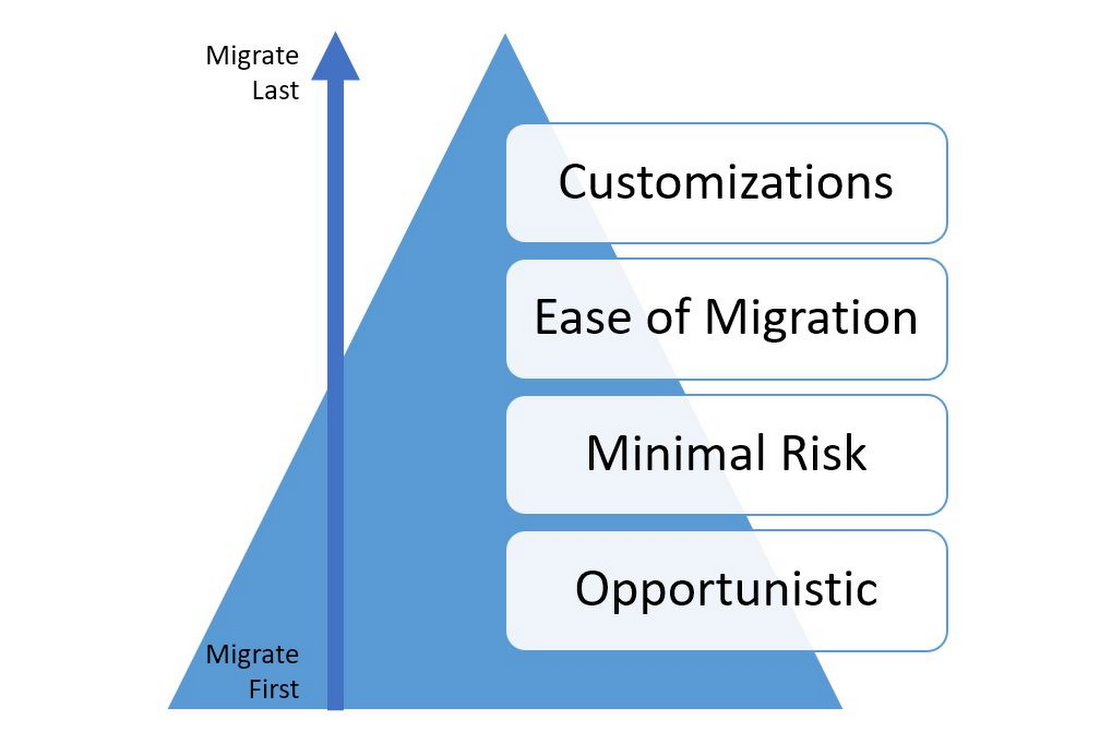Choosing your cloud app migration order
Tom Nikl
Cloud Migration Team, Google Cloud
Ravi Kiran Chintalapudi
Product Manager
[Editor’s note: This post originally appeared on the Velostrata blog. Velostrata has since come into the Google Cloud fold, and we’re pleased to now bring you their seasoned perspective on successful cloud migrations. There’s more here on how Velostrata’s accelerated migration technology works.]
It’s a question we hear a lot: How do you decide the order in which you migrate applications into the public cloud? It’s a critical question, because early success during a cloud migration is crucial to continuing on your cloud adoption path. Inversely, early failure is an easy way to doom a project altogether. You might be on board with the benefits of public cloud, but wading through every application that’s been created or deployed in your business can be complicated and time-consuming. Although there’s no one-size-fits-all answer, there are some best practices you can use as you’re getting started evaluating your on-premises apps. This kind of up-front planning can make the migration process easier, and make the entire cloud transition smoother.
The following generic framework can help you best identify when workloads should be migrated.There are four ascending tiers that we see typically provide a good, logical migration order for workloads by group:


Tier 1: Opportunistic (especially to maximize ROI)
The first tier—strong candidates to migrate first—revolves around current opportunities that could help you maximize ROI of that app in some fashion. That’s especially useful if you’re under pressure to justify cloud business value or otherwise provide cost assessments for a workload or app. Here are some questions to ask to identify the applications to prioritize:
Is this application significantly more expensive to run on-prem than it would be to migrate and run in the public cloud?
Will this application require an upcoming hardware refresh, making it more attractive to move to the public cloud sooner rather than later?
Are there services (or regions/instances, etc.) in the cloud that would make this application perform significantly better?
Identifying these options to migrate can create some quick wins that yield tangible, immediate benefits for users and the business.
Tier 2: Minimize your migration risk
Where our first tier focuses on opportunity, our second tier focuses on risk. What applications can you move with relatively low risk to your greater IT operations? There are a number of questions IT can ask to help evaluate which applications are the least risky to migrate, making them the most attractive to migrate in the early phases of a cloud migration project. For example:
What is the business criticality of this application?
Do large swaths of employees and/or customers depend on this application?
What is the production level of this application (development vs. production)?
How many dependencies and/or integrations does this application have?
What is my IT team’s understanding of this application?
Does my IT team have proper, up-to-date, thorough documentation for this application and its architecture?
What are the operational requirements (SLAs) for this application?
What are the legal or governmental compliance requirements for this application?
What are the downtime and/or latency sensitivities for this application?
Are there line-of-business owners eager and willing to migrate their apps early?
Going through this list of questions can help you rank applications from lowest to highest risk. Low-risk applications should be migrated first, and higher-risk applications should come later.
Tier 3: Ease of migration to the public cloud
The third tier in this framework revolves around the ease with which you can potentially migrate an application to the cloud. Unlike risk, which is all about that application’s relative importance, ease of migration is about how frictionless the application’s journey to the cloud will be. Some good questions to ask include:
How new is this application, and was it designed to run on-prem or in the public cloud?
Can this application be migrated using straightforward approaches like lift-and-shift?
Is this application standardized for one OS type, or does it have flexible requirements?
Does this application (or its data) have regulatory, compliance, or SLA-based requirements to run on-prem?
When plotting out which applications to migrate to the cloud, you may find that sometimes applications from Tier 3 may go before Tier 2 (or even Tier 1). This is completely fine. Tier 2 and Tier 3 both involve a lot of variables, so it’s common to have some mixing and matching along your migration path.
Tier 4: Custom applications
The fourth and final tier of this framework—representing the applications you should migrate last—are your custom applications. These are applications that were written in-house or by third parties, but which will pose some potentially unique migration questions, like:
Was this application built specifically for its current hardware? For on-prem?
Do we have proper comments in the code to help us re-architect for the cloud if needed?
How is this application intertwined within our total application landscape?
Do we have the in-house expertise to migrate this application to the cloud successfully?
Answering these questions will help you have a sense of how (and whether) you’ll migrate these applications, and what challenges you might encounter along the way.
These four tiers represent a generic framework for you to decide the order in which to migrate your applications to the cloud. It’s crucial to get early wins during the migration process, and this framework can help you identify which applications represent the highest likelihood of early success. You can progress through your application landscape knowing which apps are most likely to yield success and which will be more challenging.
Learn more about cloud migration here, and happy planning!


